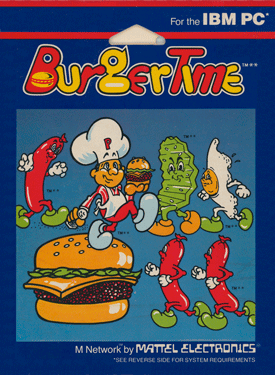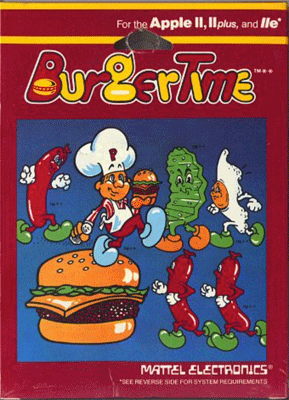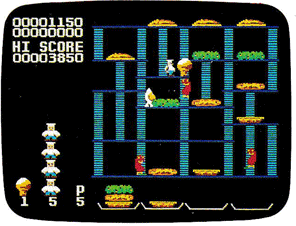- History
- Hardware
- Game List
- Mattel Electronics
- Activision
- Atarisoft
- Coleco
- Dextell
- Imagic
- Interphase
- INTV Corporation
- Body Slam
- Chip Shot
- Choplifter
- Commando
- Deep Pockets
- Dig Dug
- Diner
- Flight Simulator
- Hover Force
- Learning Fun I
- Learning Fun II
- Mountain Madness
- Pole Position
- Slam Dunk
- Slap Shot
- Spiker
- Stadium Mud Buggies
- Super Pro Decathlon
- Super Pro Football
- Thin Ice
- Thunder Castle
- Tower of Doom
- Triple Challenge
- World Championship Baseball
- Parker Brothers
- Sega
- Instructions
- ABPA Backgammon Instructions
- Advanced Dungeons & Dragons
- AD&D Treasure of Tarmin
- Armor Battle
- Astrosmash
- Auto Racing
- B-17 Bomber
- Bodoy Slam
- Bomb Squad
- Boxing
- Bump 'N' Jump
- BurgerTime
- Buzz Bombers
- Checkers/Draughts
- Chip Shot:Super Pro Golf
- Commando
- Deep Pockets
- Dig Dug
- Diner
- Electric Company Math Fun
- Electric Company Word Fun
- Frog Bog
- Horse Racing
- Hover Force
- Kool-Aid Man
- Las Vegas Poker & Blackjack
- Learning Fun I
- Learning Fun II
- Lock 'N' Chase
- Loco-Motion
- Major League Baseball
- Masters of the Universe:The Power of He-Man
- Mission X
- Motocross
- Mountain Madness: Super Pro Skiing
- NASL Soccer
- NBA Basketball
- NFL Football
- NHL Hockey
- Night Stalker
- PBA Bowling
- PGA Golf
- Pinball
- Pole Position
- Reversi
- Royal Dealer
- Sea Battle
- Shark! Shark!
- Sharp Shot
- Slam Dunk
- Slap Shot
- Snafu
- Space Armada
- Space Battle
- Space Hawk
- Space Spartans
- Spiker!
- Stadium Mud Buggies
- Star Strike
- Sub Hunt
- Super Pro Decathlon
- Super Pro Football
- Takeover
- Tennis
- Thin Ice
- Thunder Castle
- Tower of Doom
- Triple Action
- Triple Challenge
- TRON Deadly Discs
- TRON Maze-a-Tron
- TRON Solar Sailer
- US Ski Team Skiing
- USCF Chess
- Utopia
- Vectron
- World Championship Baseball
- M Network
- ADD Tarmin
- ADD Tower of Mystery
- Adventures of TRON
- Air Raiders
- Armor Ambush
- Astroblast
- Bump 'N' Jump
- BurgerTime
- Dark Cavern
- Frogs and Flies
- In Search of the Golden Skull
- International Soccer
- Kool-Aid Man
- Lock 'N' Chase
- Masters of the Universe
- Rocky and Bullwinkle
- Sea Battle
- Space Attack
- Star Strike
- Super Challenge Baseball
- Super Challenge Football
- Swordfight
- TRON Deadly Discs
- Other Unreleased 2600 Titles
- Bump 'N' Jump - Coleco
- BurgerTime - Coleco
- Illusions- Coleco
- Masters of the Universe - Coleco
- M-Network Computer Software
BurgerTime for Computers



IBM PC DISKETTE [#4556]
Based on the Data East arcade game
Program: Gene Smith

CATALOG DESCRIPTION (January 1983, Consumer Electronics Show)
As the burger chef, you're out to build delicious hamburgers. As you run through the colorful maze assembling the ingredients, nothing can stop you. Except menacing hot dogs and pickles that are out to ruin the meal! Bury them under beef patties, lettuce and buns. Or, knock them out with pepper. The game gets more difficult as you get better. (One or two players.)
APPLE II DISKETTE [#4519]
Based on the Data East arcade game
Program: Tim Wladyka, Eric Del Sesto

CATALOG DESCRIPTION (January 1983, Consumer Electronics Show)
As the burger chef, you're out to build delicious hamburgers. As you run through the colorful maze assembling the ingredients, nothing can stop you. Except menacing hot dogs and pickles that are out to ruin the meal! Bury them under beef patties, lettuce and buns. Or, knock them out with pepper. The game gets more difficult as you get better. (One or two players.)
DEVELOPMENT HISTORY
The success of Intellivision BurgerTime caused Marketing to ask for the game on every platform possible.
Tim Wladyka, a contract programmer who regularly worked for the Mattel Electronics systems software department started development on the Apple II version of this game. When he got bogged down, Eric Del Sesto was pulled off of Atari 2600 programming to take over and finish the project. (Although only 18, Eric was one of the most experienced computer game programmers on staff, having had a computer game published while he was in high school.)

FUN FACT: The color card for an IBM PC had two monitor outputs: RGB and composite video. The standard PC color monitor was RGB and displayed 8 colors. However, a composite monitor (such as was standard for the Apple II) hooked up to the PC could display 16 colors. Few applications, though, used the additional available colors. Gene, however, wrote completely separate graphic routines to take full advantage of each type of monitor. The results on a composite monitor were stunning - even visiting representatives from IBM were shocked.
